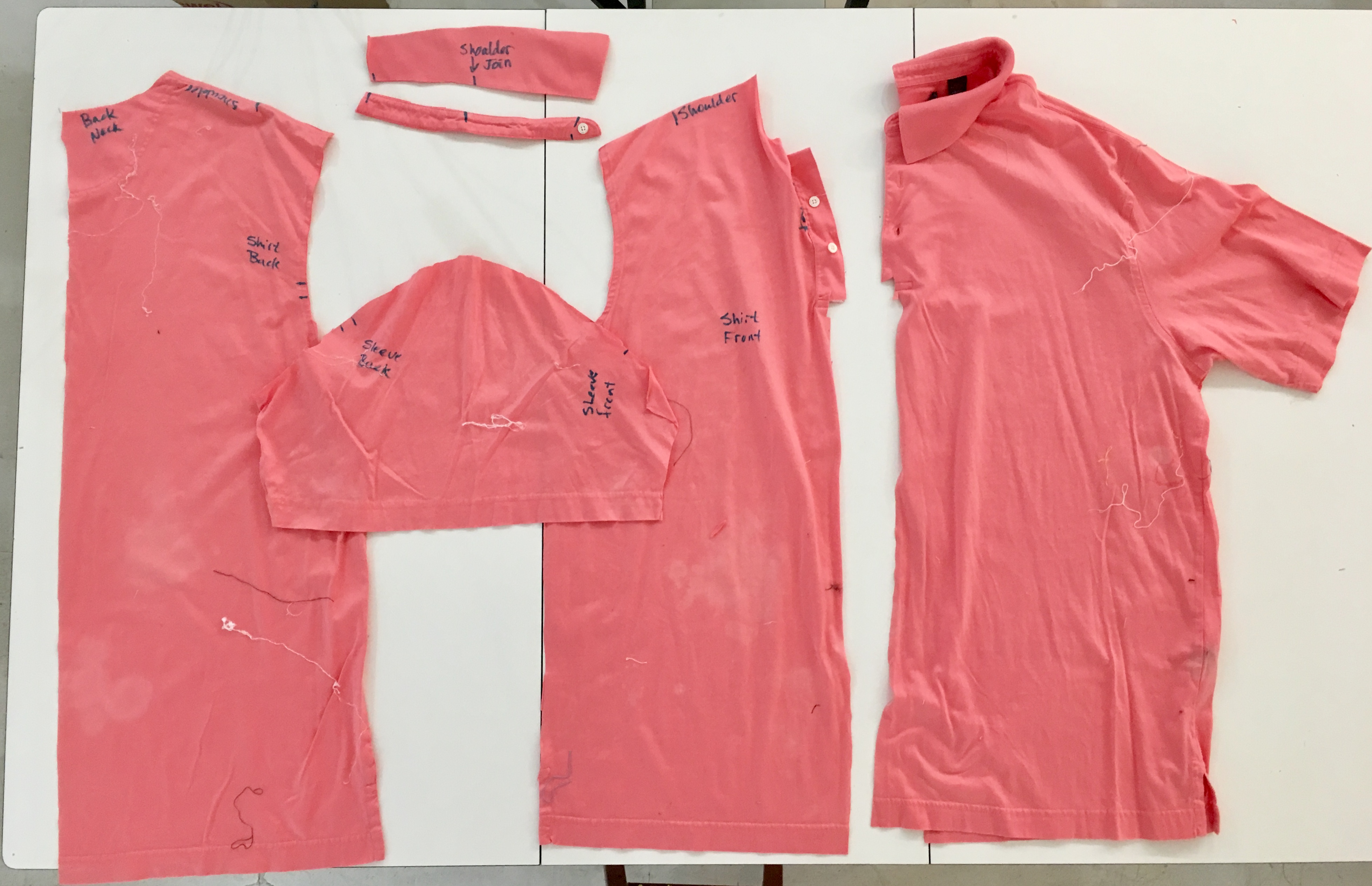We get asked how a beginner or intermediate sewist can start to understand pattern shapes and how they go together all the time. Here’s a tip to help you out: Start to really look at the garments themselves.
That sounds easy, but it can be a real challenge because you can’t just walk into a boutique or Sak’s and start doing heavy shape/piece/construction analysis. This is highly frowned upon. Come up to the workroom during studio time and we’ll tell you the whole story about the student who sent us an indignant text as she was being put out of St. John because she had the garments on the sales counter taking pictures of the inside…
“Ma’am… Can I help you?”
“Oh, no thanks… I’m just taking pictures so I can see what this looks like inside and duplicate it for myself for my sewing class tonight”
:/ “ma’am…”
“But I wasn’t going to try to sell it to someone! It’s just for me! I want to draft it tonight!”
:/ :/ “ma’am…”
This never goes over well.
So you are hanging around trying to figure things out; you’ve looked through patternmaking books like Helen Armstrong’s Patternmaking for Fashion Design; you’ve looked at yourself in the mirror wearing things you like; you’ve looked at other people wearing things they like… How do you start putting things together both in your head and in reality?
One of the best ways to really understand garments is to get inside them and see what the pieces are doing – this is where second hand and old clothes come in handy. If you have something you’ve liked but it is getting worn out, before throwing it out make a study of it. Here is just a basic polo that we were working through with someone recently. You can see how the pieces are labeled and marked up, then separated.
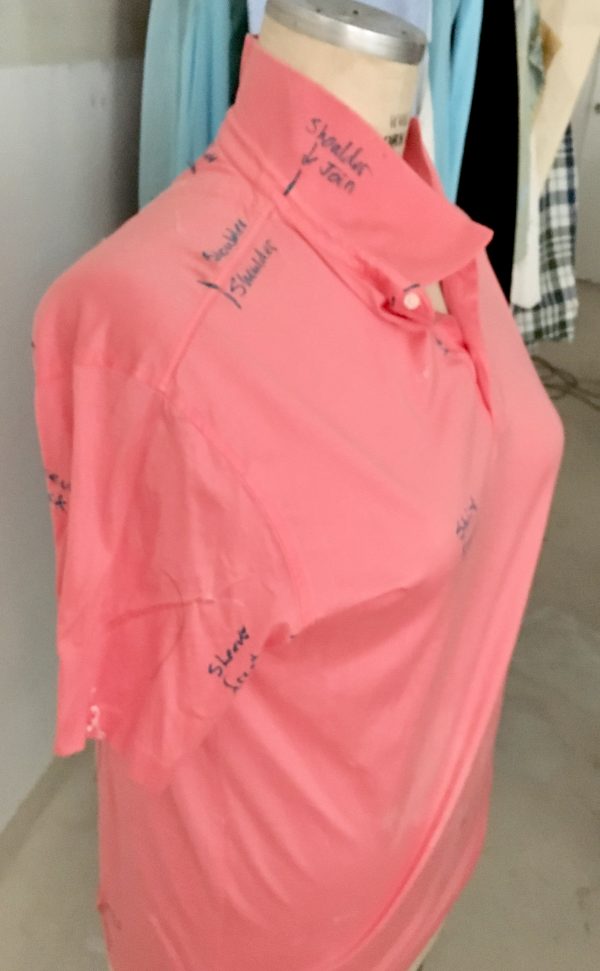
Get out Evernote or a notebook, write down the visible components – the pieces that you can see – and then start cutting along the seams. Use a sharpie and make marks on the seams where the pieces go together and then lay the pieces flat.

You can even take the time to make a pattern from these pieces. Look at the fabric and see where the grain line is, look at the pieces flat and see which pieces have been eased to others, look at things like hems and necklines – if this is a well loved garment, these are all shapes that are shapes you like. Start to see those shapes. These are in some way your shapes. They will help you understand what you are looking for when you are looking for a pattern or starting to draft for yourself.
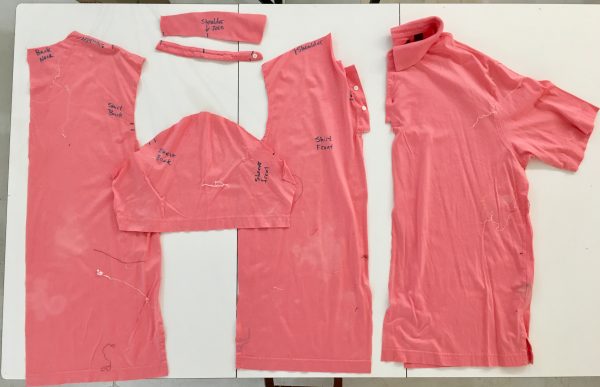

This process needn’t be pretty the first few times and, as you can see here, you don’t need to dive off the deep end and try to analyze a multi-layer evening gown with scores of pieces. Start small – t shirts, underpants, straight or A-line skirts, simple stuff – once you start to get the feel for the shapes, the interpretation, replication, and adaption of them will start to come naturally. Patternmaking is a kind of applied engineering – you don’t just walk to the river and build a bridge – that is the way of folly. You find out the components of a bridge and then you use those. This is that. To torture the metaphor a little: what you are doing here is essentially studying another bridge on the same river and then duplicating it.
The other thing you can do, since we are now living in the super-connected future, is go on Instagram and start looking through the profiles that focus on pattern making and shape. You want to be looking for users that give you the garment constructed that also show the component pieces. One of the best ones we have seen is The Modeliste. They show you how the parts are shaped for various garments in a really clean direct way.
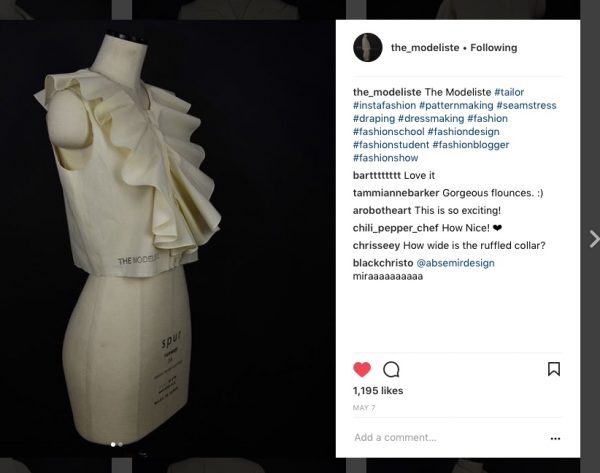
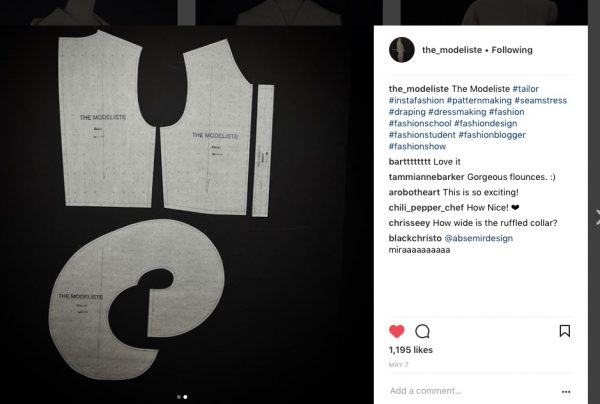
And then there is our favorite: Thrift stores. Go on sale days and buy a bunch of interesting garments. It doesn’t matter if they fit you or if you like them, it matters that they have interesting shapes. You don’t have to love the fabric – just find interesting shapes. You can start to deconstruct these in the same way you would for garments you already own. This is really a great way to begin to see things.
It is especially nice when we’ve had folks who’ve done this come to the workrooms because they have a stronger sense of shape than they would otherwise.
